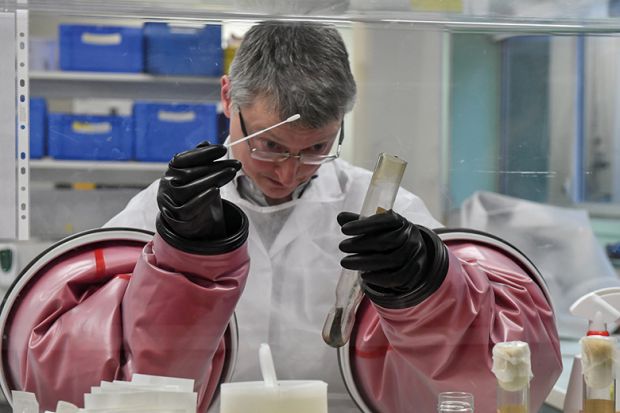With almost 32,000 staff and an annual budget of €3.2 billion (£2.8 billion), France’s National Centre for Scientific Research (CNRS) is, by some distance, Europe’s largest research organisation.
It has also long been France’s most internationally esteemed research body, standing head and shoulders in reputational terms above its universities on the global stage; it CNRS.fr/en/aboutCNRS/charts.htm">topped the Nature Index with almost 4,600 articles published in leading scientific journals last year, ahead of the Chinese Academy of Sciences and Germany’s Max Planck Institutes.
However, the powerhouse of French science, whose staff co-author roughly CNRS.fr/en/506.htm">half of all French papers listed in Clarivate’s Science Citation Index each year, is facing questions about whether its supersized scale still fits with modern science as a new leader arrives.
Appointed by President Emmanuel Macron in January, Antoine Petit is a computer scientist who had led the French National Institute for Computer Science and Applied Mathematics (Inria) since October 2014.
Professor Petit has called, in a parliamentary hearing before his nomination, for CNRS to become more “agile and reactive”. He is particularly keen on putting more cash into well-equipped laboratories and research budgets, rather than increasing the number of researchers, using a Paris-based superstar footballer as an example. “If you recruit Neymar and you haven’t got enough money to buy him a ball to play football, this is a bit stupid,” said Professor Petit.
Concerns about the massive cost of France’s great science monolith are nothing new. Since its formation in 1939, many have questioned whether the same resources could be poured into university research budgets, which would help lift the performance of institutions; just one university, Paris Sciences et Lettres – PSL Research University Paris, featured in the top 100 of Times Higher Education’s latest World University Rankings.
However, PSL’s new president, Alain Fuchs, who led CNRS from 2010 until October 2017, told THE that he believed the case for root-and-branch reform was overstated.
“It has been very successful over a number of years as it has adapted over time to the global world – there is no reason why we should totally change the system,” said Professor Fuchs, a Swiss-born French chemist, who was previously president of Chimie ParisTech.
Professor Fuchs explained how CNRS, which absorbs about a quarter of France’s research budget, was one of the main planks of France’s efforts to rebuild its economy after the Second World War.
“It started with its own institutes, sometimes away from university premises, because universities at that time were poor and could not run research at the right level,” said Fuchs.
“This is no longer the case,” he adds, stating that, unlike the largely autonomous Max Planck Institutes, “90 per cent of laboratories are supported within universities, with more and more joint appointments being made.”
As such, since the 1970s, the CNRS model can no longer be accused of holding back universities from achieving their research potential by disrupting the fabled Humboldtian model of the researcher-teacher, said Professor Fuchs.
“The system works well because [researchers] are not away from the students or the university,” he explained.
Professor Fuchs does not, however, deny that it was difficult overseeing an organisation with about 12,000 researchers and 13,000 technicians scattered across the globe, including in almost 1,000 joint institutes as far away as China and Japan. “It was a bit like managing 10,000 start-up companies,” he reflected.
However, with science now increasingly dominated by larger projects – CNRS has 200 researchers at Cern in Switzerland – the agency’s scale is useful for directing large-scale spending, Professor Fuchs said. “It is good to have nationwide organisations that can attract the brightest brains from outside the country by offering excellent facilities,” he said.
The scale of his new institution, PSL, a collegiate university with about 17,000 students at 22 institutions across Paris, is still sizeable, albeit far smaller than his old institution.
Would he like to see more research funding allocated to public universities like his own – something likely to be crucial if France is to achieve its aim of creating a set of globally recognised “world-class” universities?
“I think the [research funding] landscape will definitely change,” said Professor Fuchs, adding that, nonetheless, France “must find the right balance between its national organisations and institutions’ research”.
POSTSCRIPT:
Print headline: ‘No reason’ to slim down research body
Register to continue
Why register?
- Registration is free and only takes a moment
- Once registered, you can read 3 articles a month
- Sign up for our newsletter
Subscribe
Or subscribe for unlimited access to:
- Unlimited access to news, views, insights & reviews
- Digital editions
- Digital access to THE’s university and college rankings analysis
Already registered or a current subscriber? Login








